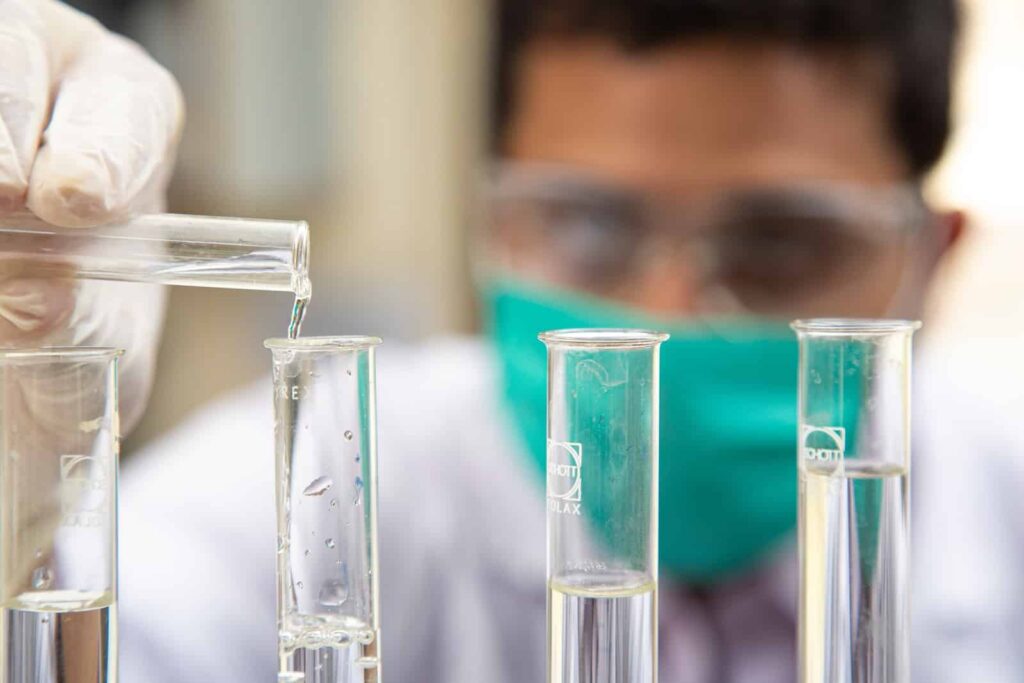Today, I’d like to discuss an intriguing question that often pops up in my field: “Why can’t we just make water?” As simple as it may sound, it’s a question with profound implications for our increasingly water-stressed world.
According to the United Nations, up to 20% of our global population lacks access to safe drinking water. Could creating water be a game-changing solution, or is it an elusive pipedream? Let’s dive into the fascinating world of H2O.

How is water made?
Water, made up of two hydrogen atoms and one oxygen atom (H2O), is the most studied chemical compound known to humanity. Yet, the process of combining hydrogen and oxygen to create water is anything but simple. Oxygen’s six electrons form a near-complete shell, requiring a significant amount of energy to overcome its resistance to accepting more electrons.

Remember, both hydrogen and oxygen are highly reactive gases, and combining them to create water often results in an explosive reaction. A classic example is the tragic 1937 Hindenburg disaster, where a spark ignited the hydrogen-filled airship, resulting in a violent explosion.
The Complexities of Creating Water
Safely creating water in large quantities to address global water scarcity isn’t just about combining hydrogen and oxygen. The process requires highly purified versions of these gases, or the resulting water will be contaminated. While modern technologies can produce these purified gases, it’s still an inefficient and costly process.
Moreover, we’re yet to figure out how to contain the explosive reactions involved safely. We certainly can’t risk more Hindenburg-like catastrophes.
Alternative Solutions: Harvesting Water
Given the complexities and risks involved in creating water, many innovative solutions are being explored to harness existing water resources more efficiently.
1. Purifying water: Natural and human-made pollutants render a significant proportion of our freshwater undrinkable. However, modern filtration technologies can make this water safe for consumption. While small-scale filtration is readily available, we’re yet to develop a large-scale solution for entire cities or communities. Nevertheless, this technology is continually being refined, especially in water-scarce regions worldwide.
2. Desalinating water: Given that about 97% of Earth’s water is saltwater, desalination offers a promising solution to freshwater scarcity. Over 300 million people globally rely on desalinated seawater, with Kuwait even boasting 100% mechanically desalinated water. However, desalination is energy-intensive and expensive, leaving it beyond the reach of the most vulnerable populations. Additionally, the process produces brine waste, which can have significant environmental impacts if not managed correctly.
3. Harvesting atmospheric water: The percentage of water vapor in our atmosphere varies with weather conditions. Innovative devices that use turbines to cool atmospheric water vapor into condensing droplets are gaining traction. While they’re yet to be scaled up for large-scale use, they offer a glimpse into a future where we might literally pluck water out of thin air. However, like all solutions, this too has potential environmental consequences that need thorough exploration.
Frequently Asked Questions
How is the water broken down?
Water splitting is a chemical process that separates water into oxygen and hydrogen. It’s an area of extensive research due to its potential implications for a sustainable hydrogen economy.
Will there ever be a shortage of drinkable water?
While the Earth’s total water supply is constant, our access to clean, safe water is unevenly distributed and often limited. Over a billion people lack access to safe water. Our best strategy lies in conserving and managing our water resources efficiently.
A Look to the Future
With water scarcity becoming a mounting issue across the globe, the search for sustainable solutions is more crucial than ever. From harnessing technological advancements in water purification and desalination to exploring the untapped potential of atmospheric water harvesting, our journey toward quenching the world’s thirst is filled with promise and challenges.
While the possibility of creating water from hydrogen and oxygen holds a certain allure, the inherent complexities, safety concerns, and current inefficiencies make it an unlikely solution, at least for now. But never say never in science – researchers are undoubtedly exploring this avenue as we speak.
For now, our best bet lies in preserving and conserving our existing water resources while continuously refining and developing technologies to make the most of every drop of water we have. Through conscious effort and informed decision-making, we can ensure water security for generations to come.
I hope you’ve found this discussion illuminating. As a water treatment professional, I’ve seen first-hand the significance of understanding our water resources and the potential for innovation in this field. Let’s continue to educate ourselves, strive for sustainable solutions, and value our precious water resources. Together, we can make a difference in our world, one drop at a time.

Jay
Jay is a health and wellness enthusiast with expertise in water quality and nutrition. As a knowledgeable advocate for holistic well-being, Jay successfully manages Type 2 Diabetes through informed lifestyle choices. Committed to sharing reliable and authoritative insights, Jay combines firsthand experience with a passion for enhancing health."
